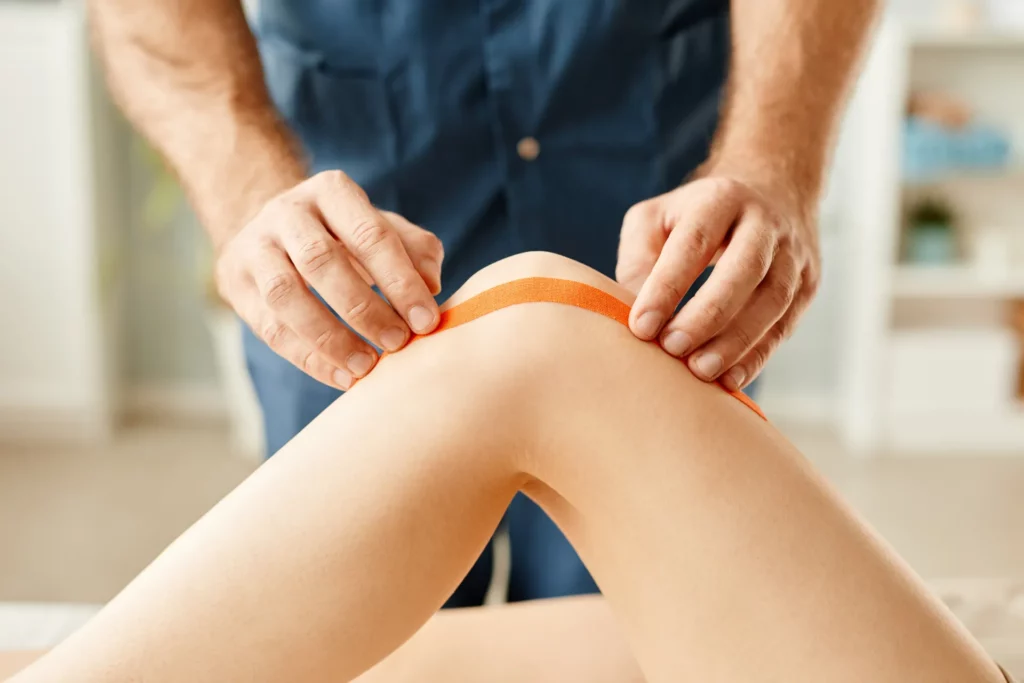Knee Pain
Knee Pain Treatment
Our Knee pain treatment has helped many patients over the years suffering a wide range of knee problems including injuries from skiing or football, overuse problems with running, pain and stiffness from arthritis and post-surgery.
So if you are suffering with pain in the knee or it feels weak or unstable then call us to book an appointment. After a comprehensive assessment we will provide a diagnosis and begin an effective treatment plan and rehab.

Knee pain treatment with Physiotherapy
The initial aim of treatment is to reduce the pain, inflammation and swelling using a combination of ultrasound, taping, massage and stretches.
As healing progresses we work on the movement and strength of the knee using mobilising techniques and exercises. As the rehabilitation progresses we look to increase balance and stability so helping prevent the injury recurring.
Finally treatment becomes more specific to the patients sport or activity
Why wait for an appointment?
You need a fast and accurate diagnosis of your knee problem and a plan for the best knee pain treatment for your condition. Any delay in treatment can make your recovery more difficult.
So call us now for an appointment or book online.
The quicker we start the better the outcome.
Structures in the knee and what goes wrong
Joints
Tibia femoral joint
Patella-femoral joint
Cartilage (Menisci)
Within the main joint are two menisci- thick rings of cartilage to help fit the bones together and provide shock absorption.
They can be torn or damaged-especially with twisting injuries making it difficult to walk or straighten the knee. It may also lock or give way.
Bursae
Within the knee joint there are many fluid filled sacs, called bursae. These protect the tendons from rubbing on bones and becoming worn.
Bursae may become aggravated and inflamed causing pain and swelling with walking or kneeling (housemaids knee)
Ligaments
The knee is reinforced at each side by two ligaments: (medial and lateral collateral ligaments).
Deep within the knee joint are two more ligaments. (Anterior and posterior cruciate ligaments.)
These provide stability and strength and may be stretched or torn especially with a twisting injury resulting in pain, swelling and instability
